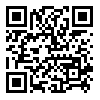دوره ۲، شماره ۳ - ( ۶-۱۳۹۹ )
جلد ۲ شماره ۳ صفحات ۳۶-۲۴ |
برگشت به فهرست نسخه ها
Download citation:
BibTeX | RIS | EndNote | Medlars | ProCite | Reference Manager | RefWorks
Send citation to:



BibTeX | RIS | EndNote | Medlars | ProCite | Reference Manager | RefWorks
Send citation to:
Joshi G, Neupane B, Dahal D, Shrestha S, Dhakal P, Jandug C M B et al . Assessment of human-wildlife conflict in Kailali district of Nepal. JAD 2020; 2 (3) :24-36
URL: http://jad.lu.ac.ir/article-1-94-fa.html
URL: http://jad.lu.ac.ir/article-1-94-fa.html
Assessment of human-wildlife conflict in Kailali district of Nepal. مجله تنوع جانوری. ۱۳۹۹; ۲ (۳) :۲۴-۳۶
چکیده: (۱۲۲۷۵ مشاهده)
Human-wildlife conflict (HWC) is on an increasing trend and has become one of the most challenging problems for the rural communities of developing nations like Nepal. There is limited information available on HWC in Kailali district, Nepal. The objective of our study was to explore the different incidents and the perceptions of local people on HWC within four different sites in Kailali district. To collect information three different methods were used, a questionnaire survey (n= 80), key informant interviews (n= 10) and focus group discussions (n= 4); all during February and March 2018. Different records of HWC incidents were collected that occurred during the period of one year in 2017, except for information on human attacks which were collected from 2015 to 2017. Of the total of 102 HWC incidents, crop damage was the most severe problem followed by property damage (15) and livestock depredation (9). The Asian elephant (n= 54) was the most conflicting species for crop damage, followed by the Rhesus macaque (n= 23) and the wild pig (n= 14). Similarly, property damage was mostly caused by elephants (n= 10) and other animals (n= 5). Rice (43%) was the most damaged crop type by the conflicting species, followed by wheat (28%) and then maize (9%). For property damage, 19% of respondents reported suffering house damage while 11% suffered damage to stored food. Shouting and hitting drums was the most applied measure during HWC’s but other measures for human-wild animals co-existence and resolution are suggested.
نوع مطالعه: مقاله پژوهشی اصلی |
دریافت: 1399/2/21 | پذیرش: 1399/6/25 | انتشار: 1399/9/8
دریافت: 1399/2/21 | پذیرش: 1399/6/25 | انتشار: 1399/9/8
| بازنشر اطلاعات | |
 |
این مقاله تحت شرایط Creative Commons Attribution-NonCommercial 4.0 International License قابل بازنشر است. |





